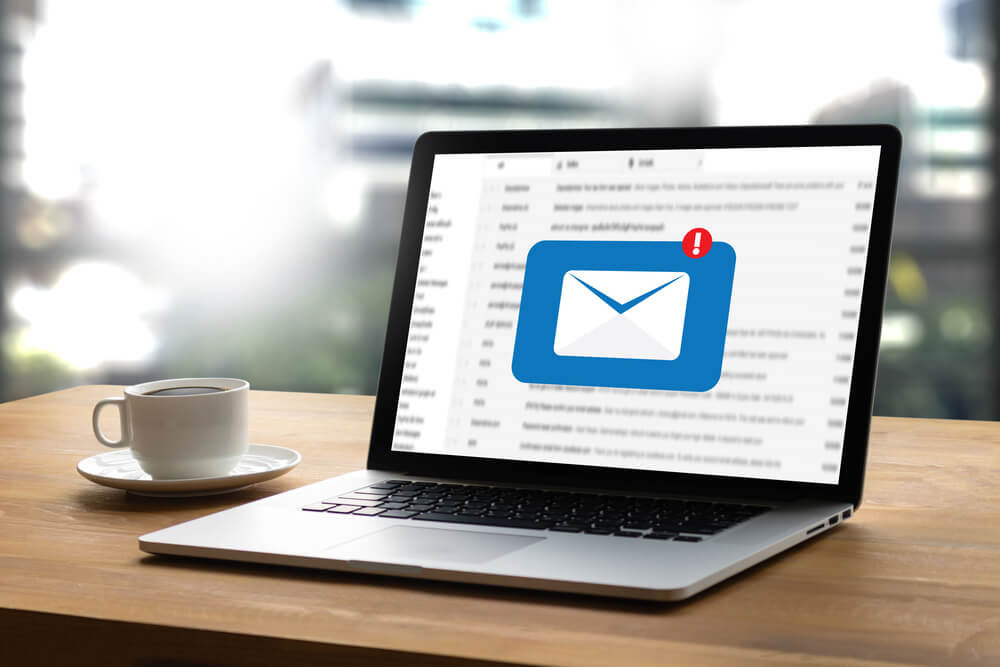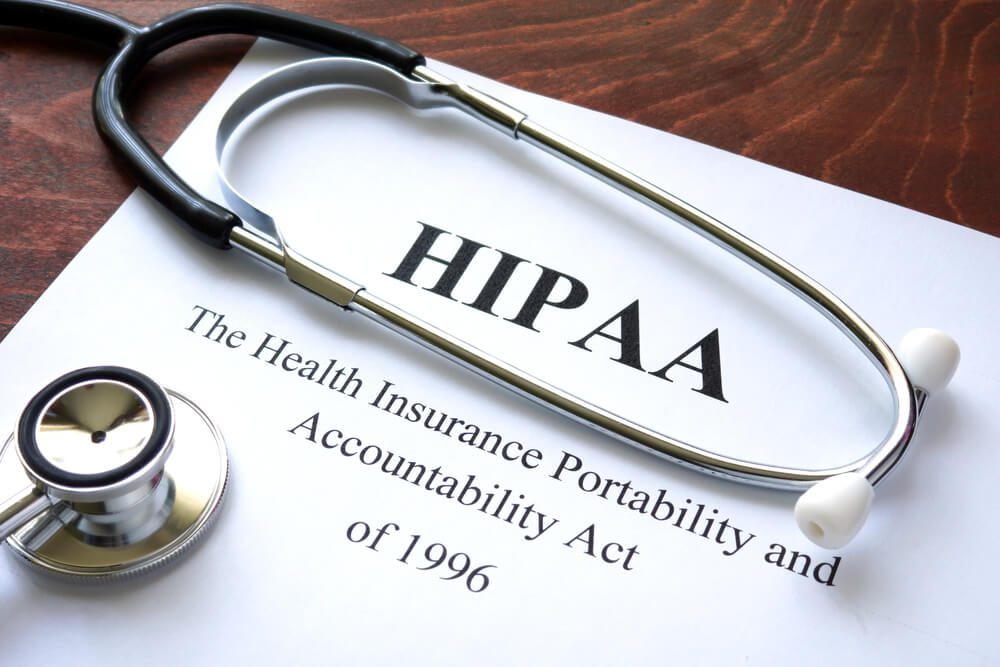
Email Marketing Tips from a Professional Services Firm: Turn Prospects Into Profits
Despite being a primary contact method in the digital age, email is still underused in professional services marketing strategies. This is partly due to the ease of using other channels (e.g., social media) and hurdles plaguing email marketing strategies, such as low open rates.
Here are five strategies that every fractional CMO for professional services uses for the best results:
 Research is the first step to building an email marketing strategy that converts. Having a full and rounded view of your target market makes it easier to develop key elements of your approach. It also reduces the margin of error in planning and helps personalize customer messages.
For instance, a successful healthcare email marketing campaign segments its pool of patients to match the appropriate message to their concerns. People with heart problems and those at risk of heart problems are two distinct (but related) groups and must be treated as such.
Creating buyer personas aids in correctly identifying individual pain points, preferences, and wants of your target markets. Though not long or too complicated, this process works better if the marketing team has a veteran leader to guide them in accurately and efficiently gathering data.
HubSpot Agency Partners is an ideal fractional CMO for professional services. Apart from any crucial SEO services they provide, they also aid in integrating HubSpot Hubs to streamline business processes and strategies. Its automation tools are vital to improving conversion rates.
Research is the first step to building an email marketing strategy that converts. Having a full and rounded view of your target market makes it easier to develop key elements of your approach. It also reduces the margin of error in planning and helps personalize customer messages.
For instance, a successful healthcare email marketing campaign segments its pool of patients to match the appropriate message to their concerns. People with heart problems and those at risk of heart problems are two distinct (but related) groups and must be treated as such.
Creating buyer personas aids in correctly identifying individual pain points, preferences, and wants of your target markets. Though not long or too complicated, this process works better if the marketing team has a veteran leader to guide them in accurately and efficiently gathering data.
HubSpot Agency Partners is an ideal fractional CMO for professional services. Apart from any crucial SEO services they provide, they also aid in integrating HubSpot Hubs to streamline business processes and strategies. Its automation tools are vital to improving conversion rates.
 Given the long history and proliferation of email phishing attacks, it is understandably difficult to draw positive responses from emails. Even old customers might become suspicious if they receive an email after months of silence. It is the message itself that is the most critical.
The content presented, tone used, and intent shown in your title alone greatly influences whether a person opens the email. For instance, buzzwords such as ‘free’ and ‘winner’ are immediate red flags for most people. Adding spam triggers significantly reduces open rates.
On the other hand, verbs and numbers make your email come across as personal and relevant to the recipient. Increasing confidence in the authenticity of your email is not the end though. Below are three critical points to keep in mind when composing email marketing content:
Given the long history and proliferation of email phishing attacks, it is understandably difficult to draw positive responses from emails. Even old customers might become suspicious if they receive an email after months of silence. It is the message itself that is the most critical.
The content presented, tone used, and intent shown in your title alone greatly influences whether a person opens the email. For instance, buzzwords such as ‘free’ and ‘winner’ are immediate red flags for most people. Adding spam triggers significantly reduces open rates.
On the other hand, verbs and numbers make your email come across as personal and relevant to the recipient. Increasing confidence in the authenticity of your email is not the end though. Below are three critical points to keep in mind when composing email marketing content:
 People are more likely to convert if they feel like the message is directed toward them and their needs, which is why writing a compelling title, content, and CTA is invaluable. Using the recipient’s name in the subject line often draws attention to your email.
Having said that, this is not a set rule and can sometimes lead to business woes. All private businesses covered by the Health Insurance Portability and Accountability Act of 1996 (HIPAA), for instance, should refrain from including protected health information (PHI) in emails (such as the patient’s name).
This is also not an absolute rule because HIPAA does allow patient names in secured emails to and from medical professionals. It remains important, however, to personalize and automate your email marketing campaign for better results. Here is how you can achieve that:
People are more likely to convert if they feel like the message is directed toward them and their needs, which is why writing a compelling title, content, and CTA is invaluable. Using the recipient’s name in the subject line often draws attention to your email.
Having said that, this is not a set rule and can sometimes lead to business woes. All private businesses covered by the Health Insurance Portability and Accountability Act of 1996 (HIPAA), for instance, should refrain from including protected health information (PHI) in emails (such as the patient’s name).
This is also not an absolute rule because HIPAA does allow patient names in secured emails to and from medical professionals. It remains important, however, to personalize and automate your email marketing campaign for better results. Here is how you can achieve that:
 Most of your marketing emails will either be ignored or deleted without customers returning to your business. Unfortunately, that is how it goes. Optimizing your strategy to include elements with the best chance of getting results is where data analytics is of the utmost importance.
All of your marketing activity has the potential to yield one or more data points on your target market’s behavior. For example, the number of signups for a given mailing list signifies its value to your audience. On the other hand, email open rates show a subject line’s effectiveness.
The value of using marketing analytics to improve performance cannot be overstated because it provides an objective overview of results.
Below are some smart ways to apply analytics and update your strategy: (Keep in mind that “fixes” do not last forever — strategy refreshes are essential.)
Most of your marketing emails will either be ignored or deleted without customers returning to your business. Unfortunately, that is how it goes. Optimizing your strategy to include elements with the best chance of getting results is where data analytics is of the utmost importance.
All of your marketing activity has the potential to yield one or more data points on your target market’s behavior. For example, the number of signups for a given mailing list signifies its value to your audience. On the other hand, email open rates show a subject line’s effectiveness.
The value of using marketing analytics to improve performance cannot be overstated because it provides an objective overview of results.
Below are some smart ways to apply analytics and update your strategy: (Keep in mind that “fixes” do not last forever — strategy refreshes are essential.)
 Emails seem like the most innocuous marketing campaign method. They can have highly damaging consequences for all involved, as many laws and regulations apply to this practice. Each one targets a specific area or industry.
The Health Insurance Portability and Accountability Act of 1996 (HIPAA) is one example of industry-specific laws that limit email marketing. It covers the misuse of protected health information (PHI). Healthcare-based professional services benefit from hiring a fractional CMO well-versed in what is or is not allowed according to HIPAA rules.
Adhering to marketing requirements is critical. Many other potential pitfalls for email marketing exist besides HIPAA, such as how you obtain customer email addresses. The three sections below discuss relevant laws in more detail and suggest different ways to fully comply.
Emails seem like the most innocuous marketing campaign method. They can have highly damaging consequences for all involved, as many laws and regulations apply to this practice. Each one targets a specific area or industry.
The Health Insurance Portability and Accountability Act of 1996 (HIPAA) is one example of industry-specific laws that limit email marketing. It covers the misuse of protected health information (PHI). Healthcare-based professional services benefit from hiring a fractional CMO well-versed in what is or is not allowed according to HIPAA rules.
Adhering to marketing requirements is critical. Many other potential pitfalls for email marketing exist besides HIPAA, such as how you obtain customer email addresses. The three sections below discuss relevant laws in more detail and suggest different ways to fully comply.
- Use research and insight to understand your audience.
- Write compelling marketing emails with clear intentions.
- Personalize and automate marketing for better results.
- Monitor analytics to optimize your email marketing ROI.
- Strictly follow all applicable email marketing guidelines.
Want to know how to get a Chief Marketing Officer for your Professional Services Organization without the cost of a full-time employee? Watch this video to find out!
Five Helpful Tips to Raise Your Email Marketing Conversions
Emails are a convenient and free method of raising brand awareness and maintaining customer relationships. However, it means this marketing strategy needs more effort and prior planning to produce meaningful results. Working with an expert or following their advice makes this easier. For instance, dentists benefit from hiring a healthcare email marketing agency to build and run a campaign tailored to their business and target market. For example, a fractional CMO and an SEO agency know how to compose marketing emails that pique interest and engage audiences. Email marketing is a reliable tool for businesses that want to spur conversions. It is far from easy, though, to design, execute, and maintain an effective strategy without experience. Below, we explore five top tips that draw on the expertise of a fractional CMO for professional services.1. Use Research and Insight to Understand Your Audience
 Research is the first step to building an email marketing strategy that converts. Having a full and rounded view of your target market makes it easier to develop key elements of your approach. It also reduces the margin of error in planning and helps personalize customer messages.
For instance, a successful healthcare email marketing campaign segments its pool of patients to match the appropriate message to their concerns. People with heart problems and those at risk of heart problems are two distinct (but related) groups and must be treated as such.
Creating buyer personas aids in correctly identifying individual pain points, preferences, and wants of your target markets. Though not long or too complicated, this process works better if the marketing team has a veteran leader to guide them in accurately and efficiently gathering data.
HubSpot Agency Partners is an ideal fractional CMO for professional services. Apart from any crucial SEO services they provide, they also aid in integrating HubSpot Hubs to streamline business processes and strategies. Its automation tools are vital to improving conversion rates.
Research is the first step to building an email marketing strategy that converts. Having a full and rounded view of your target market makes it easier to develop key elements of your approach. It also reduces the margin of error in planning and helps personalize customer messages.
For instance, a successful healthcare email marketing campaign segments its pool of patients to match the appropriate message to their concerns. People with heart problems and those at risk of heart problems are two distinct (but related) groups and must be treated as such.
Creating buyer personas aids in correctly identifying individual pain points, preferences, and wants of your target markets. Though not long or too complicated, this process works better if the marketing team has a veteran leader to guide them in accurately and efficiently gathering data.
HubSpot Agency Partners is an ideal fractional CMO for professional services. Apart from any crucial SEO services they provide, they also aid in integrating HubSpot Hubs to streamline business processes and strategies. Its automation tools are vital to improving conversion rates.
2. Write Compelling Marketing Emails With Clear Intentions
 Given the long history and proliferation of email phishing attacks, it is understandably difficult to draw positive responses from emails. Even old customers might become suspicious if they receive an email after months of silence. It is the message itself that is the most critical.
The content presented, tone used, and intent shown in your title alone greatly influences whether a person opens the email. For instance, buzzwords such as ‘free’ and ‘winner’ are immediate red flags for most people. Adding spam triggers significantly reduces open rates.
On the other hand, verbs and numbers make your email come across as personal and relevant to the recipient. Increasing confidence in the authenticity of your email is not the end though. Below are three critical points to keep in mind when composing email marketing content:
Given the long history and proliferation of email phishing attacks, it is understandably difficult to draw positive responses from emails. Even old customers might become suspicious if they receive an email after months of silence. It is the message itself that is the most critical.
The content presented, tone used, and intent shown in your title alone greatly influences whether a person opens the email. For instance, buzzwords such as ‘free’ and ‘winner’ are immediate red flags for most people. Adding spam triggers significantly reduces open rates.
On the other hand, verbs and numbers make your email come across as personal and relevant to the recipient. Increasing confidence in the authenticity of your email is not the end though. Below are three critical points to keep in mind when composing email marketing content:
Create Content that Gets People’s Attention
Email content can make or break how you capture the recipient’s attention or drive conversions. Knowing the best ways to create engaging, personalized, and relevant content that speaks directly to client needs is important. For example, always start your email strategy with a welcome. Each message should have an immediately obvious purpose, whether to inform, educate, or urge the person toward a specific action. If you are unsure of what you want to accomplish, pinpointing the email’s intention is a challenge. This is where hiring a marketing expert helps. For instance, a dental practice hires a fractional CMO for professional services to fix its email marketing strategy to raise ROI. The CMO advises them to send out emails about the benefits of braces. This type of content builds trust and authority, making people more likely to convert in the future.Be Personable Using Clever Visual Content
The value of content is not just in what you say but in how you say it. In other words, it has to be a catalyst for your audience’s future actions and drive them to make informed decisions about hiring your services. Your email’s subject line and content should align and flow perfectly. To illustrate, a financial advisor knows that financial literacy is a powerful hook and designs a series of newsletters on wealth management, retirement planning, and investment strategies. If done well, it positions their firm as experts and drives clients to hire them to provide financial advice. The complexity of money matters is what drives people to seek professional services. Winning your target market’s trust is important, and charts and videos can help convey ideas. It also helps to use realistic examples to tell a compelling story with context.Write a Call to Action (CTA) That Converts
Although your title and content should persuade people to open and read marketing emails, they are not enough to urge conversions. Just because the content seems obvious, it does not mean that the recipient knows what they should do with the information that you have given them. For example, a financial advisor may attract interest in their services by sending newsletters on managing money. However, they are unlikely to get clients without a CTA to lead people back to their business. The recipient might even look at competitors, resulting in a wasted opportunity. Working with a fractional CMO for professional services remedies this because they know what gets people curious enough to convert into customers. Placing a CTA button midway through the email that says, ‘Learn Financial Literacy’ tells the recipient they have a readily available financial advisor.3. Personalize and Automate Marketing for Better Results
 People are more likely to convert if they feel like the message is directed toward them and their needs, which is why writing a compelling title, content, and CTA is invaluable. Using the recipient’s name in the subject line often draws attention to your email.
Having said that, this is not a set rule and can sometimes lead to business woes. All private businesses covered by the Health Insurance Portability and Accountability Act of 1996 (HIPAA), for instance, should refrain from including protected health information (PHI) in emails (such as the patient’s name).
This is also not an absolute rule because HIPAA does allow patient names in secured emails to and from medical professionals. It remains important, however, to personalize and automate your email marketing campaign for better results. Here is how you can achieve that:
People are more likely to convert if they feel like the message is directed toward them and their needs, which is why writing a compelling title, content, and CTA is invaluable. Using the recipient’s name in the subject line often draws attention to your email.
Having said that, this is not a set rule and can sometimes lead to business woes. All private businesses covered by the Health Insurance Portability and Accountability Act of 1996 (HIPAA), for instance, should refrain from including protected health information (PHI) in emails (such as the patient’s name).
This is also not an absolute rule because HIPAA does allow patient names in secured emails to and from medical professionals. It remains important, however, to personalize and automate your email marketing campaign for better results. Here is how you can achieve that:
Automate Your Email Strategy Where Possible
Automated email sequences can be designed to nurture leads, follow up with clients, and even keep in contact with past clients. It starts with dividing your mailing list into segments based on your lead scoring criteria, past brand interactions, or other demographic markers. You then set triggers based on the nature of the lists and automate the sending of basic email templates. It is possible to further customize this process by using the recipient’s name. In welcome emails, for instance, copy the customer’s name from the signup form for added personalization. As an additional illustration, a fractional CMO for a cybersecurity management company recommends setting up automated emails for leads who download their online safety guide. After a while, it delivers other newsletters to build trust and educate them before inviting them to schedule a preview.Set Triggered Emails to Personalize Interactions
Triggered emails are a great way to simplify how you personalize content for a lead or customer. Professional services generally use emails for a welcome, confirmation, reminder, payment, and feedback, which immediately go out after an interaction or event. Personalize the type of content that leads and clients receive by allowing them to opt in or out of mailing lists. This gives them a sense of agency (ensuring that they want to get marketing emails) and makes your job easy. All you need to do is create the content. As an example, when someone inquires about a law firm’s services, an automated email is sent immediately, offering more information, and scheduling a consultation. This personal touch increases conversion rates, especially if it gives the recipient a better idea of what to do next.Generate, Score, and Nurture Leads with Emails
Automation is not just useful for taking the bulk of the tedious work of sorting and sending emails to the right person. With the right setup, it can automatically track and score leads based on their actions. This allows you to follow up with an effective and fitting response. A social media manager, for instance, has found that new clients often reference their mini guide and website quiz as the deciding factors for an email inquiry or phone call. That means tracking those actions is the most important for improving lead generation and conversion through email. In this case, a fractional CMO for professional services might advise adding a signup option to both the guide and the quiz to make it easier to track and score new leads. Integrate some marketing tools into your website, as well, to capture lead data and quickly score their interactions.4. Monitor Analytics to Optimize Your Email Marketing ROI
 Most of your marketing emails will either be ignored or deleted without customers returning to your business. Unfortunately, that is how it goes. Optimizing your strategy to include elements with the best chance of getting results is where data analytics is of the utmost importance.
All of your marketing activity has the potential to yield one or more data points on your target market’s behavior. For example, the number of signups for a given mailing list signifies its value to your audience. On the other hand, email open rates show a subject line’s effectiveness.
The value of using marketing analytics to improve performance cannot be overstated because it provides an objective overview of results.
Below are some smart ways to apply analytics and update your strategy: (Keep in mind that “fixes” do not last forever — strategy refreshes are essential.)
Most of your marketing emails will either be ignored or deleted without customers returning to your business. Unfortunately, that is how it goes. Optimizing your strategy to include elements with the best chance of getting results is where data analytics is of the utmost importance.
All of your marketing activity has the potential to yield one or more data points on your target market’s behavior. For example, the number of signups for a given mailing list signifies its value to your audience. On the other hand, email open rates show a subject line’s effectiveness.
The value of using marketing analytics to improve performance cannot be overstated because it provides an objective overview of results.
Below are some smart ways to apply analytics and update your strategy: (Keep in mind that “fixes” do not last forever — strategy refreshes are essential.)
Understand Which Email Marketing Metrics to Track
Email marketing is straightforward when it comes to metrics and analytics. You have three high-priority variables to track and maintain:- Open rate. This refers to the percentage of recipients who open a marketing email they have received. Count it as a separate metric for each piece of mail to gauge what works.
- Clickthrough rate. Marketing emails contain backlinks to your website. This metric tells you how many people clicked them. Tracing the point of entry for a backlink is part of SEO.
- Conversion rate. This measures the percentage of people who enter through an email link and then make a purchase, book an appointment, or schedule a meeting with you.
Test, Update, and Track Your Campaign Strategies
The primary use of analytics is to continually refine your marketing strategies and capitalize on well-performing elements. Data gathering and analysis also highlight the value of diversifying and testing your emails first. Multivariate and A/B testing optimize your approach. Among the aspects that you should ideally note are the timing of your emails and how they relate to open rates. Trying new content layouts and types also influences how the email is received. Following the Americans with Disabilities Act’s (ADA) guidelines on accessibility also helps. To illustrate, an IT services company’s fractional CMO found that marketing emails sent during the work week had better open rates than those sent on weekends. Next, they looked into the optimal time of day before adjusting their mail schedule. This resulted in better conversion rates.Leverage Analytics in Refining Your Email Strategy
Use analytics to your advantage. Know what metrics are worth tracking and how to do it. Hiring a fractional CMO for professional services is one solution to this issue because they are trained to assess your needs. You can also review your data for clues. As seen in the social media manager example above, the key point is to note which emails bring leads or result in conversions. That means open, bounce, and clickthrough rates are the most basic metrics to track. Analyze each one’s ability to contribute to the overall email marketing ROI. Take this further to get granular insight into what your audience responds to most and apply it to the rest of your strategy. Monitoring unsubscribe rates is also vital to leveraging emails for customer retention. Use these to upgrade campaign performance and boost business.5. Strictly Follow All Applicable Email Marketing Guidelines
 Emails seem like the most innocuous marketing campaign method. They can have highly damaging consequences for all involved, as many laws and regulations apply to this practice. Each one targets a specific area or industry.
The Health Insurance Portability and Accountability Act of 1996 (HIPAA) is one example of industry-specific laws that limit email marketing. It covers the misuse of protected health information (PHI). Healthcare-based professional services benefit from hiring a fractional CMO well-versed in what is or is not allowed according to HIPAA rules.
Adhering to marketing requirements is critical. Many other potential pitfalls for email marketing exist besides HIPAA, such as how you obtain customer email addresses. The three sections below discuss relevant laws in more detail and suggest different ways to fully comply.
Emails seem like the most innocuous marketing campaign method. They can have highly damaging consequences for all involved, as many laws and regulations apply to this practice. Each one targets a specific area or industry.
The Health Insurance Portability and Accountability Act of 1996 (HIPAA) is one example of industry-specific laws that limit email marketing. It covers the misuse of protected health information (PHI). Healthcare-based professional services benefit from hiring a fractional CMO well-versed in what is or is not allowed according to HIPAA rules.
Adhering to marketing requirements is critical. Many other potential pitfalls for email marketing exist besides HIPAA, such as how you obtain customer email addresses. The three sections below discuss relevant laws in more detail and suggest different ways to fully comply.
Important Email Marketing Guidelines to Follow
The top email regulations you should know include, but are not limited to, the following three:- The Controlling the Assault of Non-Solicited Pornography and Marketing Act (CAN-SPAM Act) applies to emails sent within or to US recipients and requires the sender to include their address, an unsubscribe option, and an honest subject line.
- The General Data Protection Regulation (GDPR) applies to companies that handle the personal data of European Union (EU) citizens worldwide. It focuses on the person’s rights to know, manage, and refuse the use of personal data by the company.
- The California Consumer Privacy Act (CASL), much like GDPR, controls how companies obtain and use personal information from California residents. It also requires strong data protection and a link to explicitly refuse the sale of personal data.
Building a Mailing List the Right (and Legal) Way
Numerous laws, such as the CAN-SPAM Act, GDPR, CASL, and HIPAA, aim to safeguard online users and stop email marketing abuse. This extends to how businesses and companies obtain personal information. It is often, but not always, done with landing pages. For example, CASL requires the addition of a “Do Not Sell My Personal Information” link to give people more agency in how business owners use and manage their data. The CAN-SPAM Act is more specific in its requirement, providing ten business days to comply with opt-out requests. Besides ensuring compliance, voluntarily trimming down your mailing list is part of healthy email marketing practices. Retaining non-existent or closed email addresses in your list increases the bounce rate of your campaign. The recipient’s email service might also block you.Improving Email Delivery, Open, and Click Rates
Following relevant laws (e.g., CAN-SPAM Act and HIPAA) is one way to ensure email deliverability, but it does not prevent other barriers, such as spam filters, from blocking your message. Trigger words that mirror scam or phishing emails lower the chance of reaching a person’s inbox. Suppose the recipient’s email service does not automatically filter an unwanted message or block the sender. In that case, the person can easily add rules to send succeeding emails to their spam folder. The point here is that deliverability is equally a matter of winning trust. Being authentic and appropriate in your approach is the way to go, and hiring a fractional CMO for professional services helps. They know from experience what customers respond to and can customize your strategy to fit your business’s personality and build trust in your brand.Find More Email Tips for Professional Services Firms Here
Email marketing is more complex than it seems at first glance, with audience research, content creation, automation, analytics, and industry-specific rules adding much more room for error. Experts, particularly a fractional CMO, are a business’s best resource for overhauling its strategy. Changes in data privacy and data protection regulations have severe implications for marketing as a whole, but specifically for email marketing. New protocols are necessary as new tech tools become the norm in a bid to modernize. Automation, for instance, has become very important. Overall, the best approach to utilizing email marketing is to take it one step at a time to ensure that all rules and safeguards are met. A (mostly) free multipurpose tool like email is more than just for reaching new clients, which makes it priceless for any business owner or marketer. Need help increasing the conversion rate of your email marketing campaigns? Contact Digital Authority Partners (DAP) to learn how we can help.Want To Meet Our Expert Team?
Book a meeting directly here



